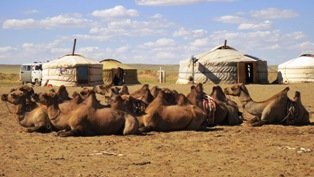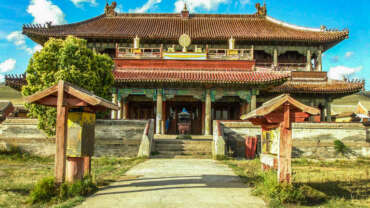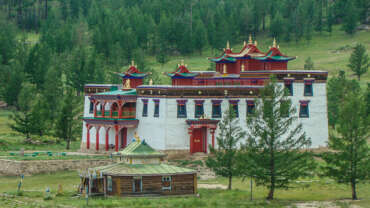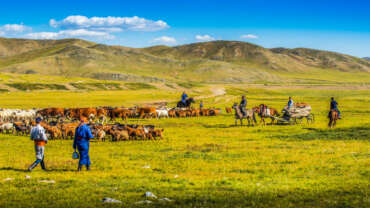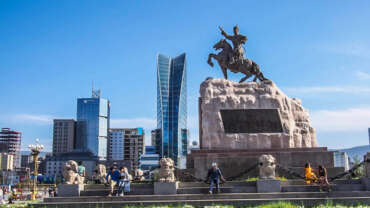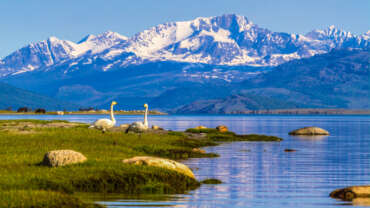Southern Mongolia
The Mongolian government established the Great Gobi National Park in 1975 and the UNESCO designated as the Great Gobi as the fourth largest Biosphere Reserve in the world in 1991. Mongolians consider that there are 33 different Gobi, where sandy desert occupies only 3 percent of the total territory. The area is often imagined as a lifeless desert like in many other parts of the world. Gobi Desert is a land of dinosaurs and it is the home for camel breeders rich with wildlife and vegetation. Dinosaur skeletons and their petrified eggs have been preserved here to the present day. Wild asses, camels, snow leopards, mountain sheep and gazelles flourish here, as do different types of flora.
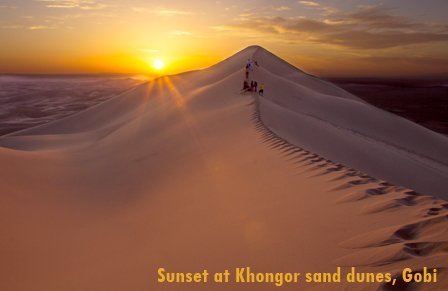
Khongor Sand Dunes
Khongor sand dunes stretch from the southernmost corner to the far west of the country. The dunes rise abruptly from the plain, in some places reaching a height of 200 meters, and extend over an area between 2-20 km in width and 180 km in length. There is a small river called Khongoryn Gol, with dark green banks full of flowers along the side of the dunes. When it is windy some of the dunes give a strange sound like the engines of an aero plane, for which they are named the “singing dunes”. There is an excellent possibility to ride camels near the dunes.
Bayanzag /Flaming cliffs
Bayanzag / Flaming cliffs – first discovered by Roy Chapman Andrews, famous American explorer in the 1920, flaming cliffs of Bayanzag are an important site for both archeological and paleontological finds. Complete dinosaur skeletons, including One-horned dinosaur (protocertops) and Egg-thief (Oviraptor) and numerous eggs were excavated in ravines between the red flaming cliffs, which look like fire in the middle of the desert from distance.
Activities: desert expeditions, camping, trekking, paleontology
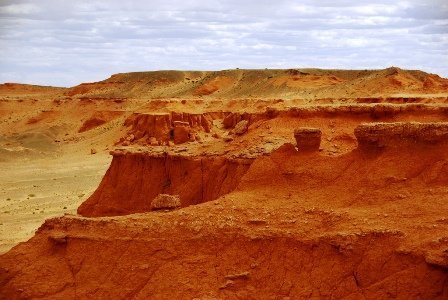
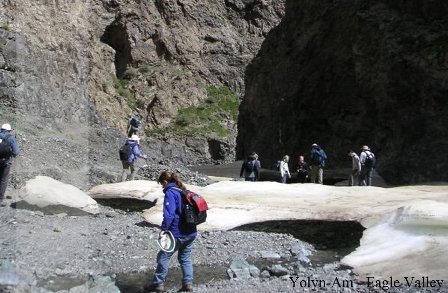
Yoliin Am Canyon
Yoliin Am canyon – One of the best-known travel destinations in the Southern Gobi is Yoliin Am canyon, known as Eagle Valley, which is a part of the Gobi Gurvan Saikhan Mountain National Park (meaning “Three Beautifies of the Gobi”). But in fact, Yol means Lammergeyer, one of the most endangered bird species of prey. Sheltered by high cliff walls on both sides of the canyon, thick ice gorges remain frozen even on summer’s hottest days.
Activities: camping, mountain climbing, trekking, wildlife viewing.
Khermen Tsav
Khermen Tsav is a canyon with beautiful oasis, 6 km in width and 15 km in length located in a distance of 400 km from Dalanzadgad city. The canyon is full of 30 meters high natural formations of cliffs, and looks like remains of ancient cities and temples, iceberg drifting on a sea, huge dinosaurs, turtles and crocodiles.
Hermen Tsav is known not only by its beauty of natural formation but also by its trove of dinosaur fossils. The first full skeleton of a dinosaur was found in this place.
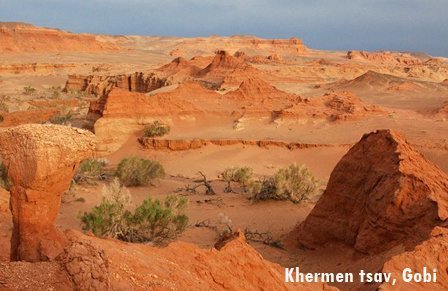
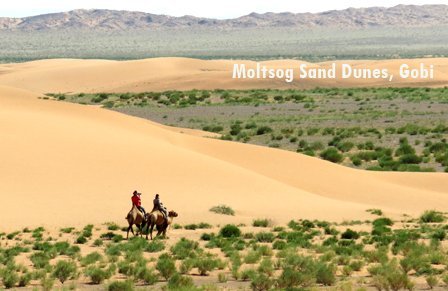
Moltsog Els Sand Dunes
Moltsog Els, is one of the few regions of the Gobi covered by sand dunes.
These magnificent sand dunes are surrounded by hills with willow trees, streams and bushes.
Camel Herder Nomads
Visiting camel herder’s family, explore their unique nomadic lifestyle which has not changed for centuries. Its chance to try drinking Hormog (fermented Mongolian camel milk) when visiting a herder family in their Ger. There is great opportunity to ride a Bactrian camel.
